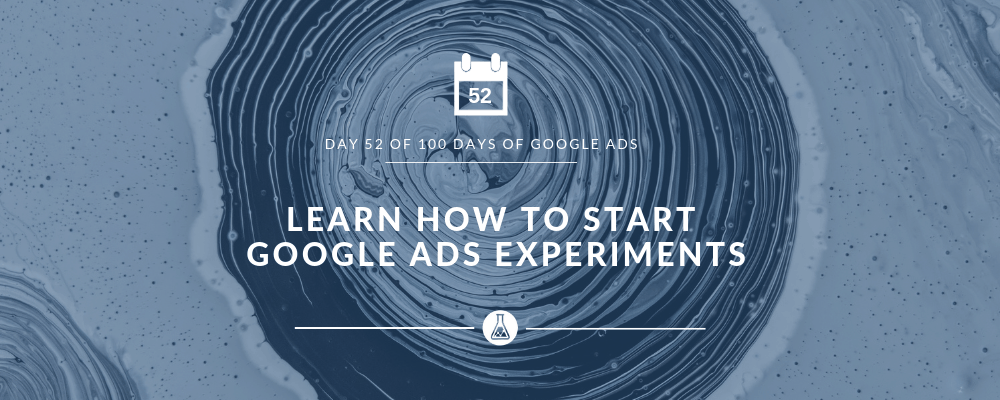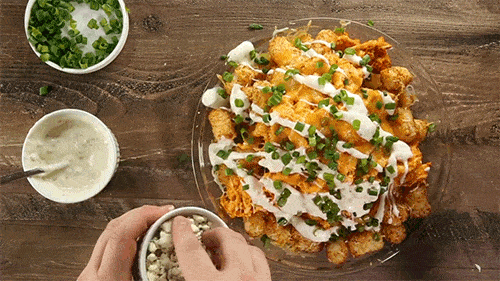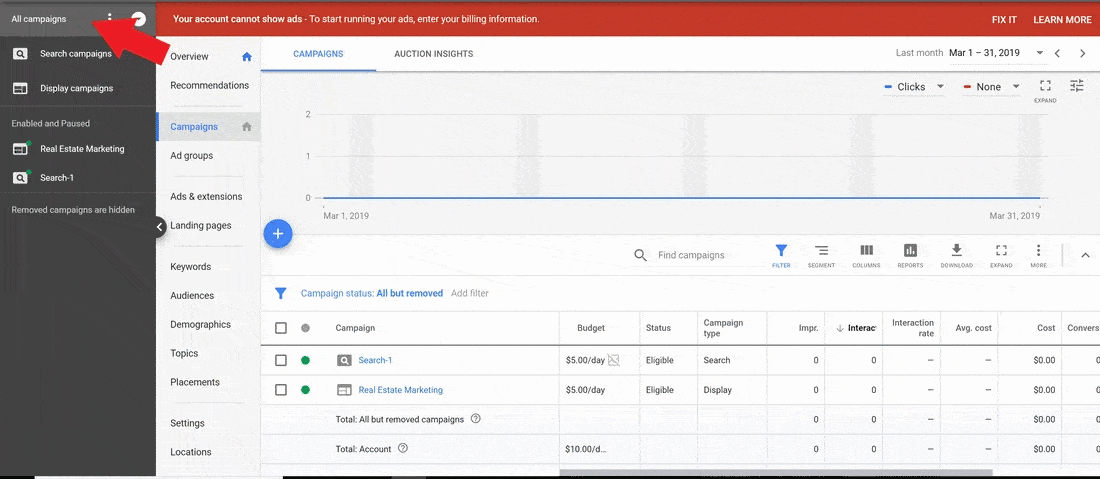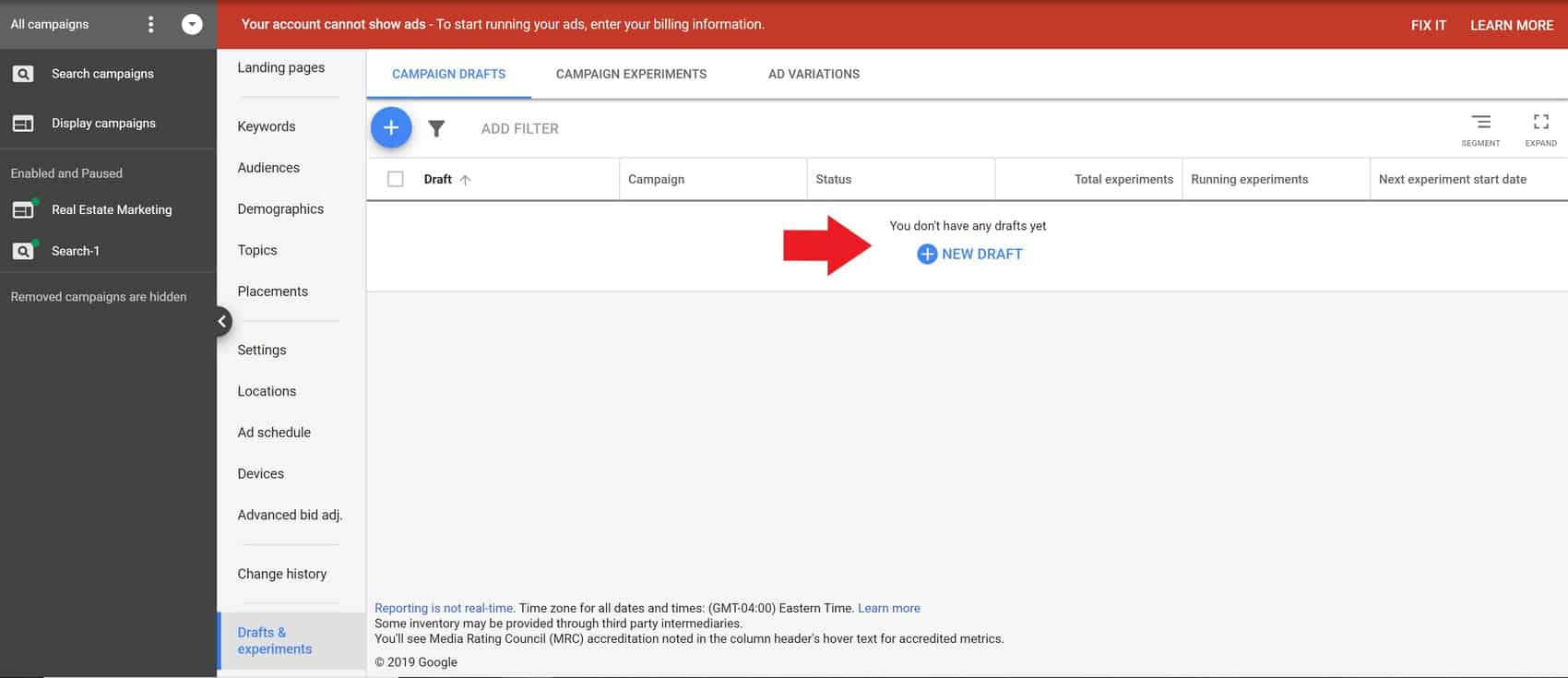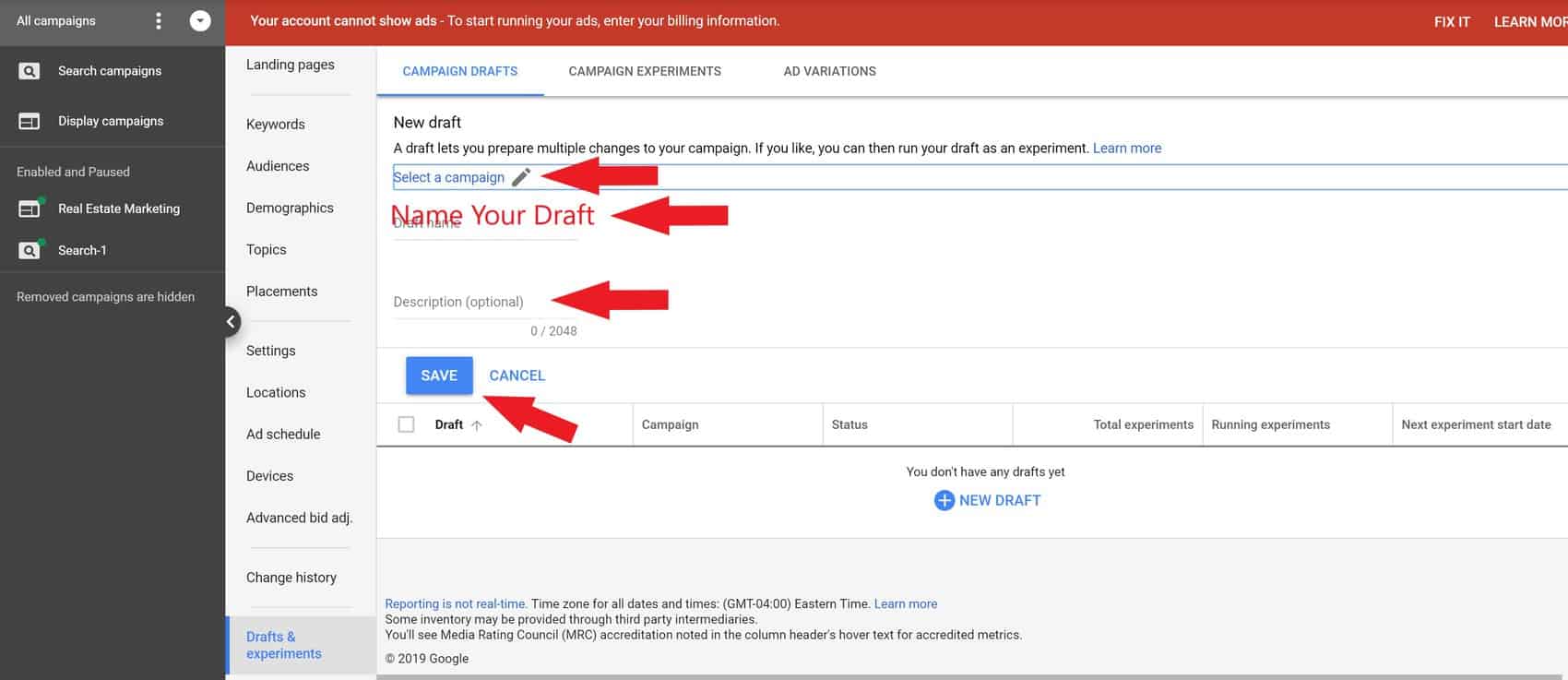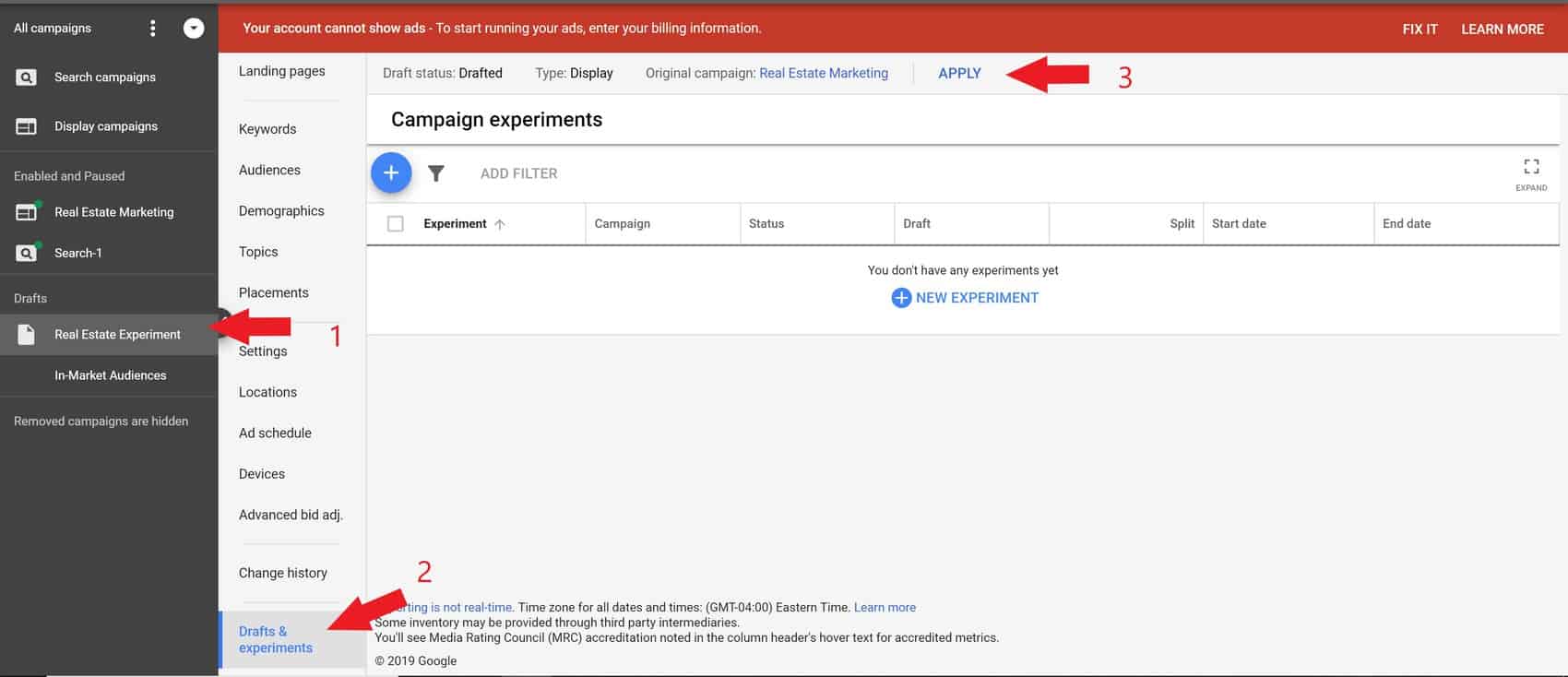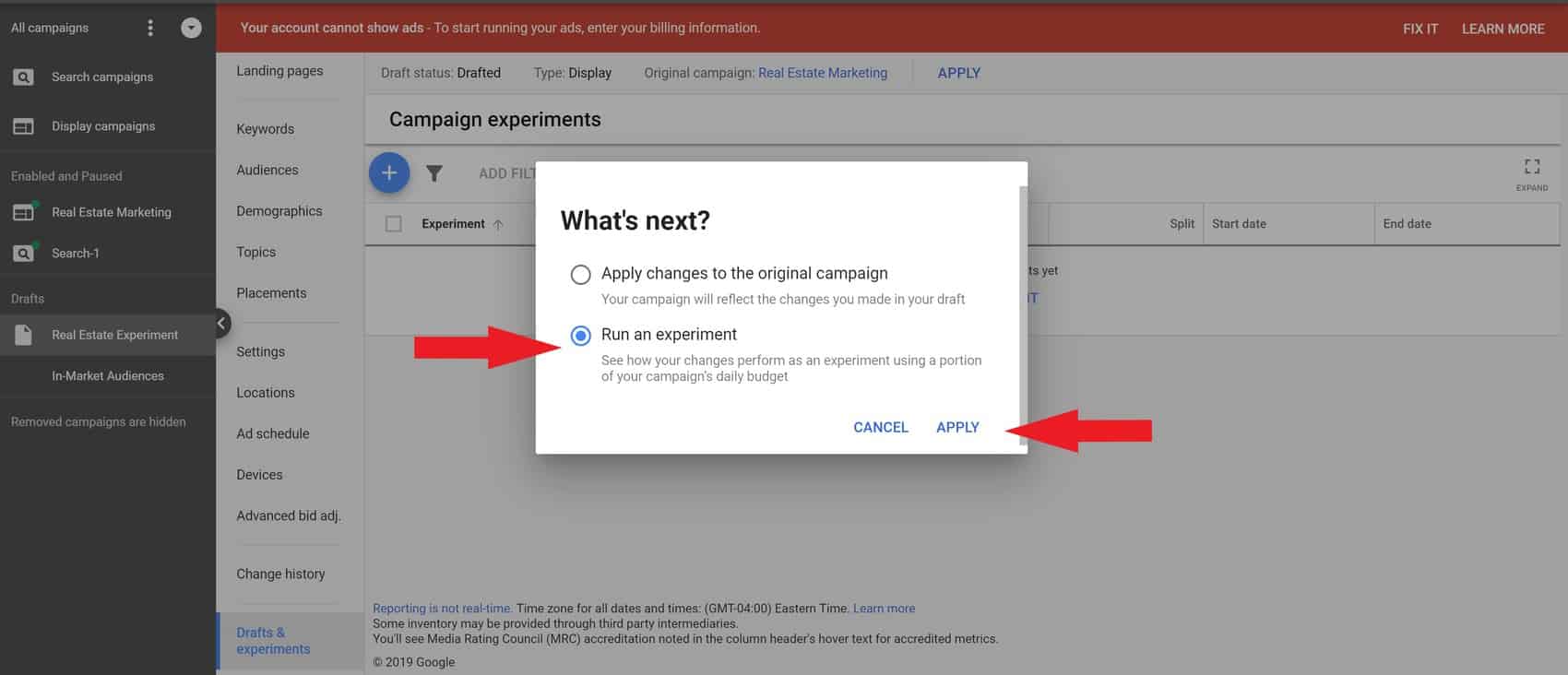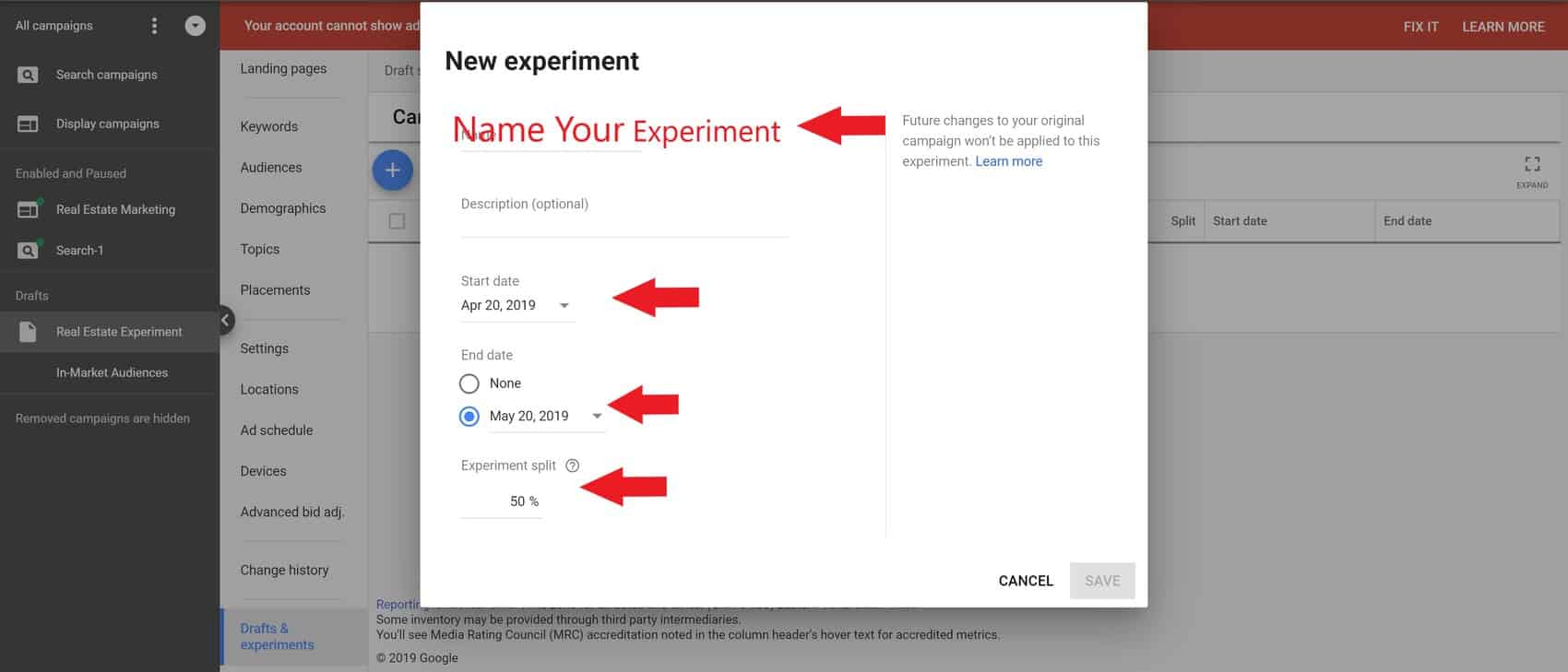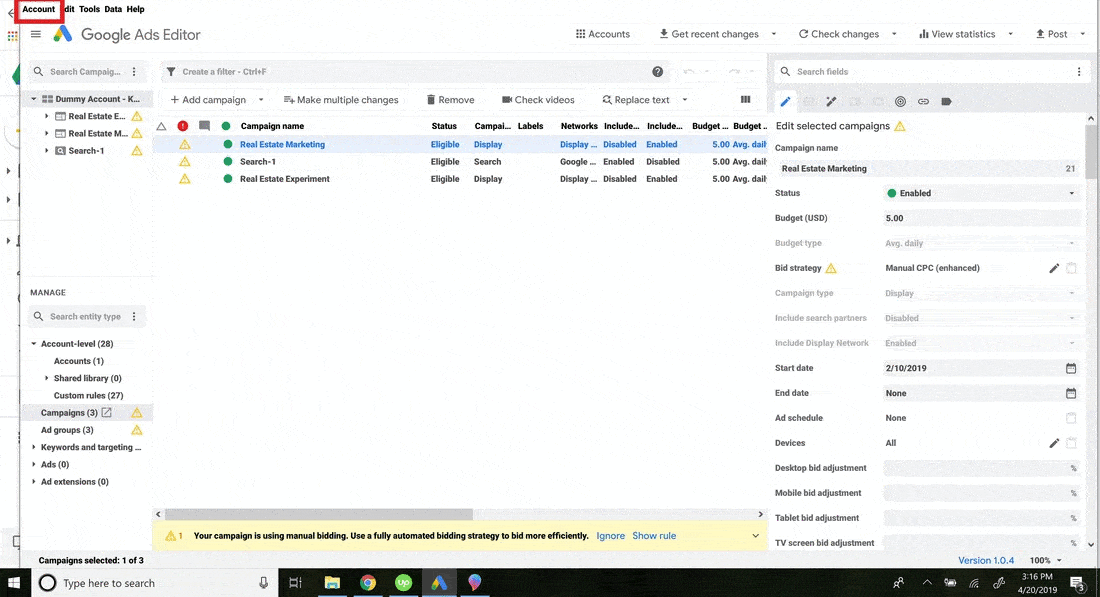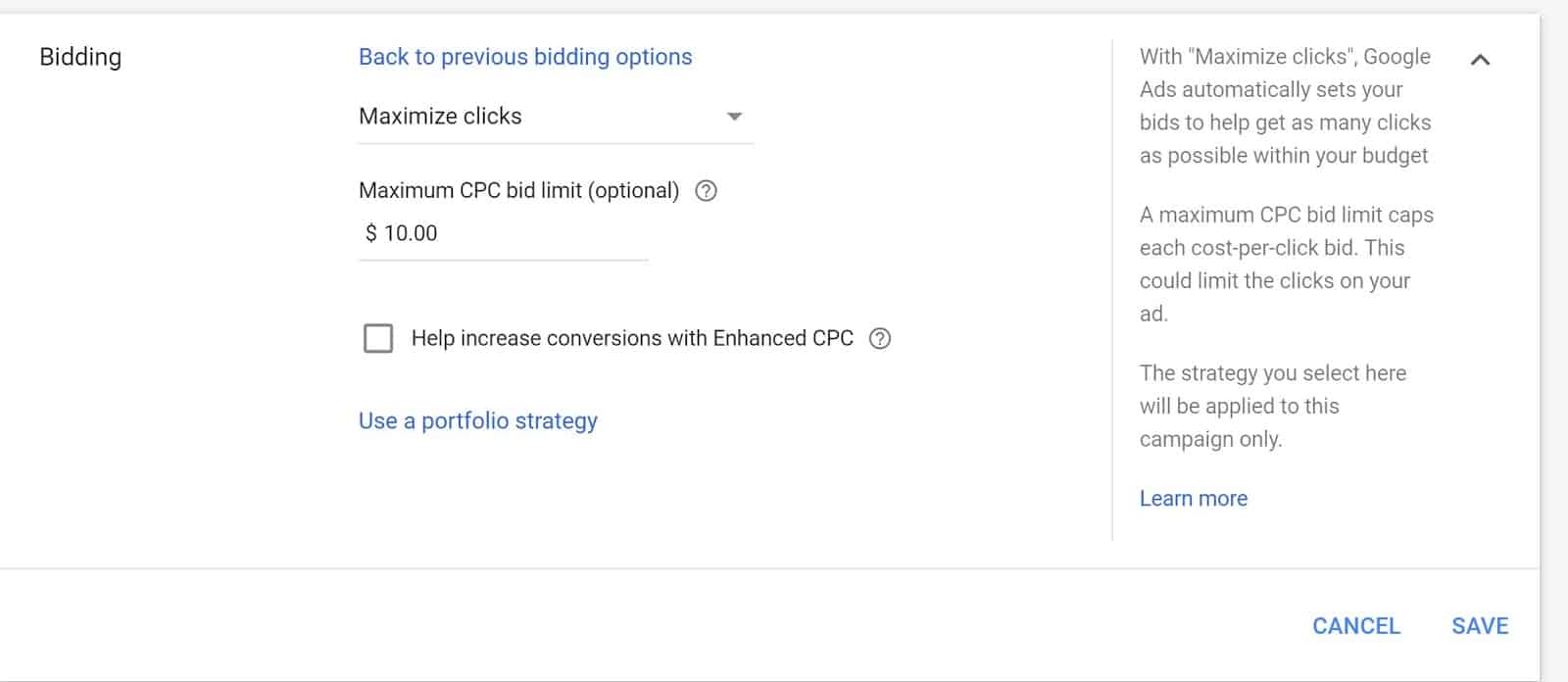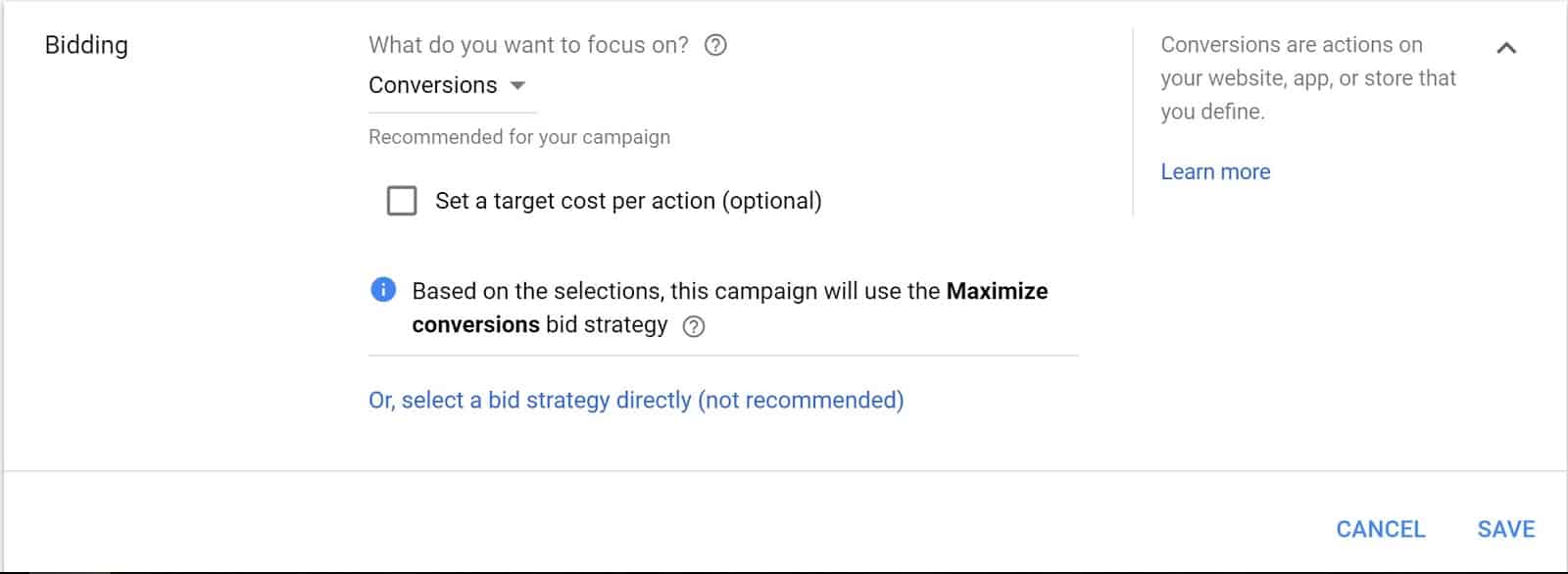If you have any experience with Google Ads or with PPC ads in general, then you understand it’s a lot like cooking. You may have an initial recipe, but things can only be improved through experimentation. That’s where Google Ads Experiments come into play.
Throughout the course of managing campaigns, you may want to try new things but, if you’re like me, you’re probably too scared to do it. Making sweeping changes to a campaign like trying a new bidding method or adding a bid modifier can turn out well, or have disastrous results. Trying out new optimizations is a part of any good PPC strategy, but their impact isn’t always positive. That’s why Google came up with Experiments.
What is a Google Ads Experiment?
A Google Ads Experiment starts as a draft, which allows you to copy a current campaign without altering the original. Since you can make a carbon copy of what’s running, you can do those A/B tests you’ve always wanted to without affecting the performance of your best-converting campaigns. Or, if you have underperforming campaigns, you can use an Experiment to test ways you might improve it.
Google Ads campaign experiments allow you to alter various things about a campaign like ad extensions, schedule, bid modifiers, and ad rotation. You might argue that you can just create a campaign to test, but then you’d run the risk of having the 2 campaigns conflicting with each other and neither getting the results you desire.
As you build your draft campaign, you’ll notice you can’t give a specific budget to your Experiment. It will share budget with your original campaign, meaning you don’t have to allocate extra budget. However, you’ll want to make sure you’ve set your budget high enough to accommodate the extra clicks.
Get Started with Google Ads Drafts and Experiments
The best way to start is to go through your Google Ads account and analyze the performance of your current campaigns. Identify A/B tests you’d like to perform or strategies you’d like to employ, such as changes to ad schedule, addition or removal of keywords, testing different bidding automation types, and changes to campaign structure.
You can set up Experiments on Display and Search campaigns, including Remarketing campaigns, but YouTube, App and Shopping campaigns aren’t currently eligible.
Setting Up Campaign Drafts and Experiments
Developing a Google Ads Experiment is a 2-part process. It begins with producing a draft, which is a copy of the campaign you’d like to split test and making your desired changes. Then, selecting dates for the Experiment to run and how you’d like to split traffic between the original campaign and the test campaign.
Setting Up the Draft
Once you have the variables you’d like to test, you’ll start by creating a draft. Do this by signing into Google Ads and clicking “All Campaigns.” Next, click “Drafts and Experiments” on the left side.
Once you’re in “Drafts,” click on the “+New Draft” button.
Here, you’ll choose the campaign you would like to mirror. Name your new campaign. It’s wise to name it something that helps you identify that it’s an Experiment so you can find it at a glance. If all of your campaigns have very similar names, you’ll wind up looking for a proverbial needle in a haystack.
In addition, you can also give your Experiment a description. After you’ve finished naming your campaign, save your “Draft.”
From Draft to Campaign Experiment
Now you’re free to make all of the changes you’d like to the draft campaign. Need to walk away for a minute? Don’t worry, once you’ve saved the draft you can leave and make changes at any time. Just note that your campaign won’t be live until you click “Apply” in your draft at the top of the page.
Clicking “Apply” isn’t like hitting the “go” button. You’ll need to choose “Run an Experiment” and “Apply” again.
Your new experiment needs some details like name and description. Choose when you’d like the Experiment to start and when you’d like it to end. You should aim for a minimum of 30 days or 1000 impressions to ensure you collect enough data to make an informed decision. The last thing you’ll need to set up is the split between the original campaign and the draft. If you want a true A/B test, you should set the percentage to 50%.
Once you’re happy with the settings, click save. You’ll get a message stating that your experiment is being created. The process will finish, and your campaign will begin running on the date you set.
Google Ads Editor and Experiments
Many of us create all of our campaigns in Google Ads Editor so you may be disappointed to discover that you cannot create a Google Ads Experiment in the Editor. However, you can manage them from Editor.
You may also be wondering how to download experiments into Google Ads Editor. You can do this the same way you do for all campaigns. Do this by clicking on “Account” at the top and hover over “Recent Changes.”
While you can’t create your Experiment in Editor, you can modify the structure, edit the status at the keyword, ad group, or ad level, and update ad group level bid modifiers. You can also edit keyword CPC modifiers and import and export bid modifiers.
There are some aspects of your Google Ads Experiment that can’t be edited though. For instance, you can’t edit or paste the bid strategies in your campaign Experiments. If you copy and paste items from your Experiment to another campaign and the new campaign has a different strategy than the original campaign, the bid multipliers will be removed.
If you’d like to learn more about what you can and can’t do with Experiments in Editor, check out Google’s Help Files.
What You Should Know About Google Ads Experiments
As with all testing features, there are pros and cons. Some capabilities are unavailable and there are settings that may not be adjustable. It’s essential to know your limitations before you start so you can plan accordingly. You wouldn’t get up off the couch and run a marathon with no training, right?
Things You Should Know About Functionality
Sometimes as advertisers we like to pause things and come back to them later. You’ll find that this is something you can’t do with your Google Ads Campaign Experiments. They are live until their end date (if you set it).
No Reactivation Options
Want to restart your completed Experiments? That’s not something you can do either. Once a campaign has ended or been deactivated, it can’t be reactivated.
Not All Bidding Tools are Available
The bid simulator can be a handy tool. It helps you to see how your bids might impact your campaign’s performance. When you set up a Campaign Experiment, your budget is split between the Experiment and the primary campaign. This dependency means you’ll have to fly blind – no bid simulator is available for either campaign during the period the Experiment is live.
Number of Experiments Per Campaign Limited
If you have multiple ideas you want to test out, you’ll have to take it slow. You can only have one Experiment per campaign. On the surface, this may be frustrating, but in reality, it helps you adhere to best practices. If you were to create multiple Experiments at the same time, you would tax your budget. Plus, if you tested device bids in one Experiment and a bid strategy in another with positive results, then decided to add both to your live campaign it could be disastrous. Rather, it’s best to test and implement one variable at a time to avoid negative impacts.
Structural Cautions
Google Ads Experiments can only be performed at the campaign level. You may want to try out strategies at a lower level like ad groups or keywords, but you’ll need to duplicate a campaign and make edits at the level you’d like to test.
Limited By Budget
Because budgets are shared between the original campaign and the Experiment, you should ensure you have a sufficient budget before starting. Otherwise, your campaigns will become limited, and you won’t have an accurate split test.
Experiment Split Test
Once you choose a percentage for your split test, it’s set in stone. You won’t be able to change the setting once you’ve saved your campaign and gone live.
Unsupported Features
Google’s bid strategies are helpful, but you won’t be able to use all of them while you’re A/B testing. Target search page location and target outranking share are options you won’t have.
Are you using a shared budget? Campaigns that have shared budgets aren’t eligible for Google Ads Experiments. You’ll have to remove the shared budget before you start the Draft process.
Reporting Constraints
As data analysts, we live and die by our reports. You’ll be sad to know that of the reports you use most aren’t available. For instance, the keyword diagnosis, ad schedule, and auction insights reports are unavailable. There are also no category and search terms or display placement reports.
Wondering if a report, bid modifier, strategy or other feature is available? Refer to Google Ads Help for more information.
Experiments to Try
Want to get started, but you’re not sure what to test first? Some tried and true A/B tests are a great way to start. Think about the changes that make you the most nervous. Here’s your canvas to paint a new picture – free of all the potential failure that comes with a regular campaign.
Experiment Number 1 - Device Bids
You know mobile performs well, but what bid modifiers provide the best mix? Based on your current data, develop a device bid test to optimize performance. Not sure if marketing to tablets is in your favor? Allow tablets to run with no modifier in your regular campaign and devise a test campaign where you decrease the bids somewhere between 50% and 90% to see the overall effect on conversions.
Experiment Number 2 - Expand Location Targeting
Ever wonder how your campaign would perform if you expanded the geographic area you were targeting? You probably haven’t tried this with your live campaign because you didn’t want to rob budget from locations that convert.
Experiment Number 3 - Enhanced Bidding Automation Types
Enhanced bidding automation, or Smart Bidding, can help you improve clicks, conversions, cost per acquisition (CPA), and improve impression share. They can also help you with bidding. Before going for broke on a particular strategy, you should try it out. This will give you the chance to see how it affects CPA, conversion rate, total spend, and other important KPIs.
There are plenty of other tests you can perform as well, like landing page tests, ad schedules, just about anything you can think of. What’s really important is to always be testing your campaigns and to never assume they are performing the best they ever will.
Tips for Success
Getting started can be difficult, but these tips will set you up for success.
- When you press apply on your Campaign Experiment, keep in mind it will need a learning period. It won’t retain any historical data from the original campaign, so it’ll need time to gather data. You should anticipate a learning period of at least 14 days, though it could be a little bit longer if your campaign isn’t getting a lot of traffic.
- Pick high traffic campaigns. If you use low traffic campaigns, you may not end up with the data you need, or it may take months to arrive at any usable conclusions.
- Pick tests that are likely to have a noticeable impact, like trialing different ad rotations to see how your creatives perform.
- It’s smart to test a variety of variables, but don’t do it all at once. You won’t know what caused the results you’re seeing.
When you started reading, you may have been thinking “I don’t need an experiment to do split testing.” We hope that we’ve shown you how valuable and useful running experiments in Google Ads really is.
Not sure how your account is performing? Request a proposal today!

